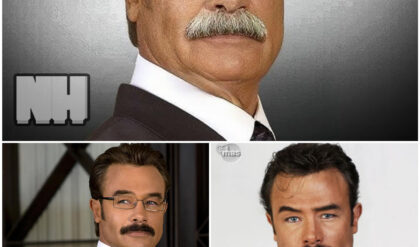In a thrilling game with over 70,000 fans in attendance, the Buffalo Bills faced off against the Baltimore Ravens in a highly anticipated matchup that was bound to be exciting from the very beginning. The night was marked by intense action on both sides, with some showers briefly interrupting the kick-off but not the intensity of the game. Both teams came prepared, and the atmosphere was electric as the Baltimore Ravens, donning their black uniforms, geared up for a heated competition.
First Quarter: Ravens Take the Lead
The game kicked off with Baltimore’s Justin Tucker hitting the crossbar, giving the Buffalo Bills the first possession of the night. Starting at the 30-yard line, Buffalo’s offense, led by quarterback Josh Allen, immediately felt the heat from the Ravens’ defense. Allen, who had been sacked twice in the previous three games, knew the pressure would be high. Despite this, Buffalo entered the game boasting the highest-scoring offense in the league through the first three weeks, scoring a total of 112 points.
On their opening drive, Allen quickly connected with tight end Dalton Kincaid, gaining a few yards, but the Ravens’ defense, led by Marlon Humphrey, was quick to respond. On third down, Allen tried to step up and run, barely making it to the 40-yard line for a first down. This early show of Allen’s running ability hinted at the scrappy battle ahead.
The Bills’ opening drive ultimately stalled, forcing them to punt. Sam Martin, a veteran punter in his 12th season, pinned the Ravens deep, and Baltimore took over at their own 13-yard line. Baltimore’s offense was ready, starting out of the pistol formation with running back Derrick Henry in the backfield.
Baltimore wasted no time, as Derrick Henry immediately broke free for a massive 87-yard touchdown run, evoking memories of his 99-yard run earlier in his career. The Ravens struck fast, and with Tucker’s extra point, they took a 7-0 lead. Henry’s powerful run not only set the tone for Baltimore’s offense but also marked his 95th career rushing touchdown.
Buffalo’s second drive began much like their first, starting at the 30-yard line. Josh Allen found success connecting with James Cook for several solid gains. Cook, playing an instrumental role in Buffalo’s offensive strategy, contributed significantly as both a runner and receiver. Allen repeatedly looked to his reliable tight end Kincaid, who provided the Bills with several key first downs throughout the game.
Despite Buffalo’s persistence, Baltimore’s defense, led by Roquan Smith, proved too much to handle. Smith, a two-time All-Pro linebacker, constantly applied pressure, pushing Allen into uncomfortable situations. The Bills had no choice but to settle for a field goal, bringing the score to 7-3 as Tyler Bass successfully kicked a 50-yard attempt.
Second Quarter: Henry’s Dominance
The second quarter began with Baltimore continuing to rely on Derrick Henry. Despite Buffalo’s attempts to contain him, Henry’s combination of power and speed proved difficult to handle. After a long drive highlighted by effective runs from Henry and short passes by Lamar Jackson, the Ravens found themselves in scoring position once again.
With a second-and-goal opportunity, Jackson faked a run, rolled out, and found Henry in the flat for his second touchdown of the night—this one a receiving touchdown. Tucker’s extra point made it 14-3, and the Ravens seemed in control.
On the next Buffalo possession, Allen continued to find himself under heavy pressure. A penalty pushed the Bills back, and though Allen tried to make up for the lost yards with a 9-yard pass, Buffalo was once again forced to attempt a field goal. This time, Bass nailed it from 50 yards out, bringing the score to 14-6.
Defensive Struggles and Momentum Shifts
While Baltimore’s offense thrived, Buffalo’s defense struggled to contain Henry, whose versatility became the Ravens’ key weapon. Baltimore also exploited Buffalo’s injuries, as three of Buffalo’s starting linebackers were missing, forcing the defense to rely on newer, less experienced players. One key absence was star nickel cornerback Taron Johnson, who was out with an injury, leaving a significant hole in Buffalo’s secondary.
As Baltimore marched down the field once again, it became evident that the Ravens’ offense, with its multifaceted running attack and well-timed passing game, was going to be a challenge for Buffalo. The Ravens’ offensive line, despite some injuries, provided Jackson with ample time to make plays. On a crucial play, Mark Andrews delivered a key block to spring Justice Hill free for a big gain inside the 5-yard line, setting up a first-and-goal situation for Baltimore.
Once again, Derrick Henry was the centerpiece of the attack. Though Buffalo’s defense managed to stop him on first down, the Ravens were determined to keep the pressure on. On the next play, Jackson found Henry in the flat for a short pass, and Henry powered through for his second touchdown of the game, this time through the air.
Buffalo’s Offense Struggles
On the following drive, Buffalo attempted to gain momentum. Allen, however, found himself constantly under siege from the Ravens’ pass rush. Chris Jones, one of Baltimore’s defensive standouts, shut down a key run, forcing Buffalo into another third-and-long situation. Allen managed to escape the pressure on several occasions, using his legs to extend plays, but the Ravens’ defense refused to break.
A series of penalties on Buffalo’s offensive line further hampered their efforts. David Edwards, filling in at right tackle, was flagged for holding, pushing the Bills back and nullifying one of Allen’s rare successful scrambles.
Buffalo once again settled for a field goal attempt, this time from 50 yards, and Bass converted, bringing the score to 21-9.
Conclusion
By halftime, Baltimore had a firm grip on the game, thanks to Derrick Henry’s two-touchdown performance and a staunch defensive effort that limited Buffalo’s typically high-powered offense to just nine points. Though Buffalo had managed to move the ball downfield, their failure to convert in the red zone, combined with penalties and a relentless Ravens defense, left them trailing.
The second half promised more of the same, with both teams needing to make key adjustments. For Buffalo, the challenge was clear: stop Derrick Henry and find a way to break through Baltimore’s defense. For Baltimore, it was about maintaining their lead and continuing to apply pressure on Josh Allen. Ultimately, the Ravens held on to win the game, with Henry’s performance standing out as one of the defining moments of the contest.





